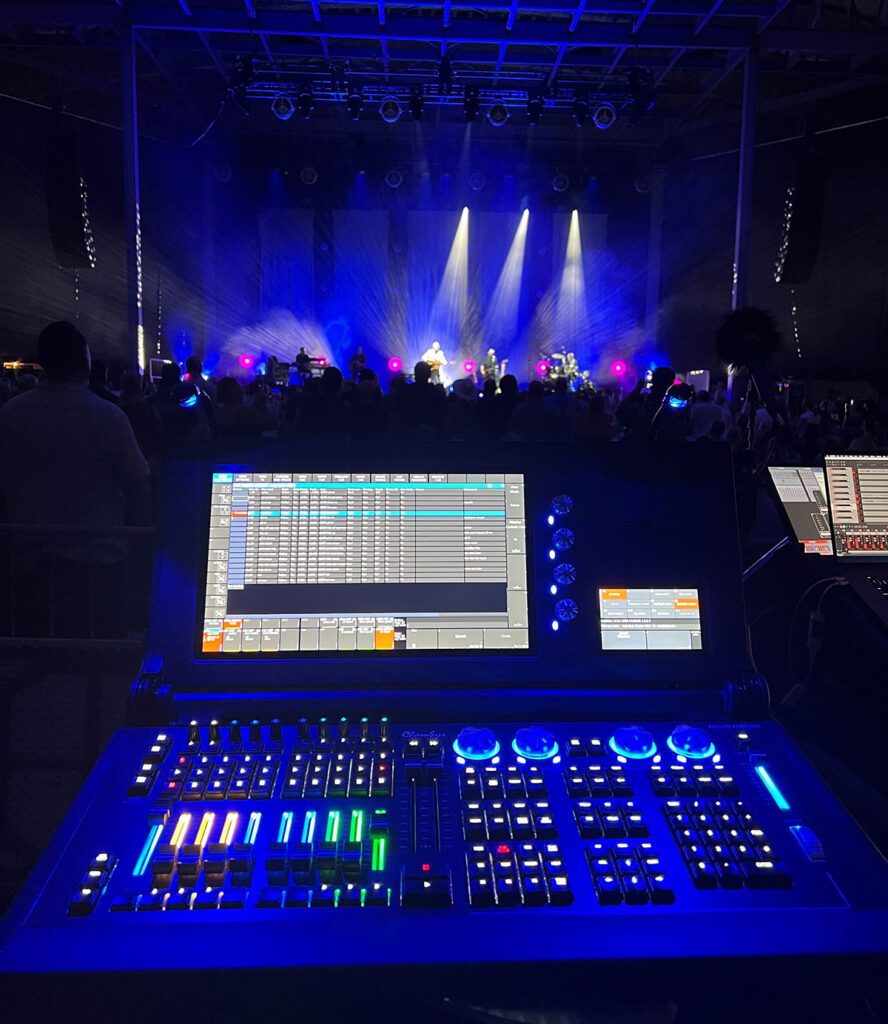“The greater the contrast, the greater the potential energy,” the eminent Swiss thinker Carl Jung once observed. Jung wasn’t alluding to lighting design when he made this observation; his interest was the study of human emotions, but anyone who has ever played off light and shadows against each other on a stage can appreciate the wisdom of his words.
Joe Beardsmore and Jonny Gaskell channeled the immense power of contrasts when designing the light and video show for David Gray’s recently concluded USA leg of his 20th Anniversary White Ladder tour; only their distinctions involved more than brightness and darkness. It also was based on the difference between black-and-white looks and a full color palette.
Divided into two distinct parts, their iconic client’s show was lit in “black and white shades of CTO cold whites and CTB” for one hour, as Gray performed back catalog hits; then, following an intermission, concluded with saturated colored lighting as the star played his seminal seven-million sold album “White Ladder” in its entirety. (Gray even changed outfits to mirror this contrast, wearing a black suit at the start of the show and a white one in in its concluding section.)
“There were many different things we did to keep it interesting as we created this contrast, between black-and-white and color,” said Beardsmore. “We relied on about eight different shades of white in the first parr of show, and wherever possible we also did black and white I-MAG. Then in the second part of the show, we had a total change of mood with our full color palette. The emotional change this created was great. It was even more effective than Jonny and I thought it would be when we decided on that as a concept back in 2020.”
Helping Beardsmore, the owner of Phosphor Tech, bring this dramatic contrast to life was his ChamSys MagicQ MQ250M. “The banks of faders on this console are great,” he said. “I had overrides on Bank 2 and whenever I needed to busk anything, it was all there on defaults, which was great. Bank 3 had all my video clips stored so they were easy to find.

“I used overrides for a few things, such as in venues where I worried about the floor lights blinding the audience In those cases, I relied on the ability to swap the automated faders to group masters and limit the floor lights,” continued Beardsmore. “On the other side of the coin, on the few daylight shows we had, I ran the Group Masters at 200-percent to pull the subtle programming out of the show. For video, I also have the composition master on an override so I could blend that into house I-MAG feeds. I’m running four layers of Resolume triggers over ArtNet, and I have a separate bank on the 250 for the video and override faders to swap content and cameras, which all works very well.”
The dials on his ChamSys desk were another feature that came in handy on this tour, according to Beardsmore, who used them for all his bumps, timecode triggering and key lighting overrides. He notes that also used the Timeline Window for programming timecode songs, which made up about one third of the show.
Every morning before a show, Beardsmore’s tech team (Glen Claytor, crew chief; Kat Jensma, and Clint Morris) used a MagicQ MQ70 to test dimmers. Beardsmore checked the positions off the main desk on the Wi-Fi build into his MagicQ 250M console, and updated off the iPhone app, a process he says “worked great.” all I had, and it worked great.
Running his eight universe show on a rig supplied by Upstaging with artistic flair, Beardsmore created a dynamic flow of evocative looks during the roughly two-hour show that left the artists and his fans so energized that, as one critic observed, both looked like they could go for more.